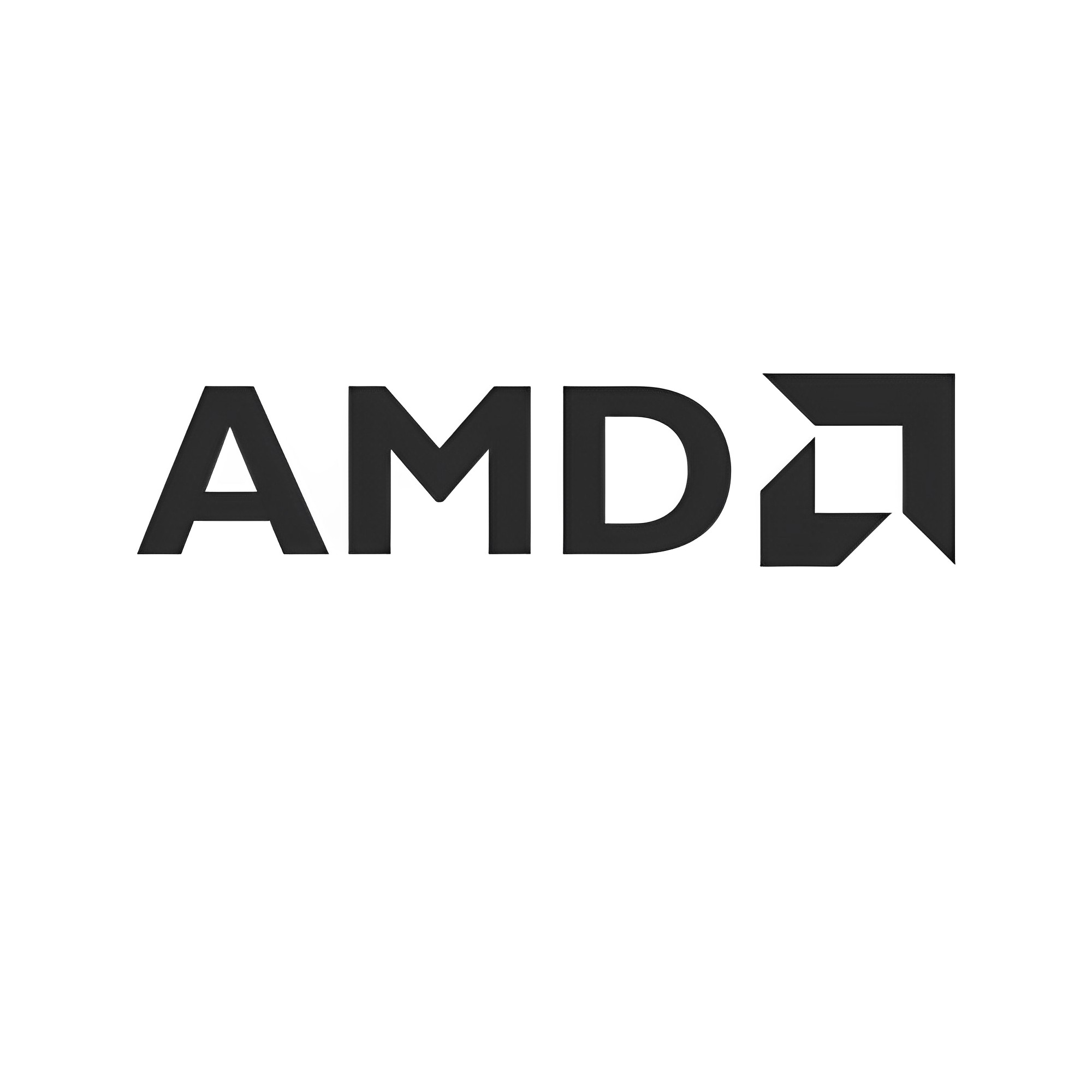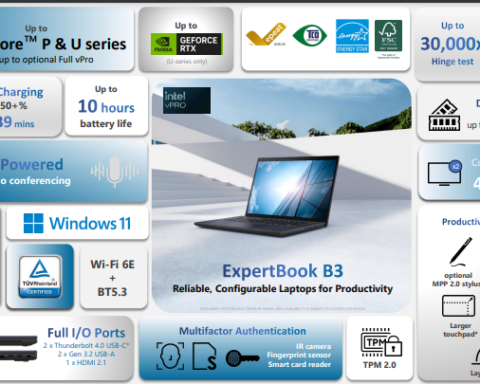Today, at the “together we advance_data centers” event, AMD (NASDAQ: AMD) announced the general availability of the 4th Gen AMD EPYC™ processors; with unmatched performance for critical workloads across cloud[i], enterprise[ii] and high performance computing[iii].
The 4th Gen AMD EPYC processors bring next-generation architecture, technology, and features to the modern data center. Built on the “Zen 4” core, the highest performance core ever from AMD[iv], the processors deliver leadership performance, energy efficiency[v] and help customers accelerate data center modernization for greater application throughput and more actionable insights.

“Choosing the right data center processor is more important than ever, and 4th Gen EPYC processors deliver leadership in every dimension,” said Dr. Lisa Su, Chair and CEO, AMD. “The data center represents the largest growth opportunity and most strategic priority for AMD, and we are committed to making AMD the partner of choice by offering the industry’s broadest portfolio of high-performance and adaptive computing engines. We have built the best data center CPU roadmap in the industry, and with 4th Gen EPYC we deliver another major step forward in performance and efficiency to make the best server processor roadmap even better. With a significantly expanded set of solutions on-track to launch from our ecosystem of partners, customers selecting 4th Gen EPYC to power their data centers can improve performance, consolidate their infrastructure, and lower energy costs.”
Accelerating Results and Driving Actionable Insights for Businesses
[i]SP5-010B: SPECrate®2017_int_base based on published scores from www.spec.org as of 11/10/2022. Configurations: 2P AMD EPYC 9654 (1790 SPECrate®2017_int_base, 192 total cores, www.spec.org/cpu2017/results/res2022q4/cpu2017-20221024-32607.html) is 2.97x the performance of published 2P Intel Xeon Platinum 8380 (602 SPECrate®2017_int_base, 80 total cores, http://spec.org/cpu2017/results/res2021q2/cpu2017-20210521-26364.html).
[ii]SP5-011B: SPECpower_ssj®2008 comparison based on published 2U, 2P Windows® results as of 11/10/2022. Configurations: 2P AMD EPYC 9654 (27501 overall ssj_ops/W, 2U, http://www.spec.org/power_ssj2008/results/res2022q4/power_ssj2008-20221020-01194.html) vs. 2P Intel Xeon Platinum 8380 (13670 overall ssj_ops/W, 2U, http://www.spec.org/power_ssj2008/results/res2022q4/power_ssj2008-20220926-01184.html).
[iii]SP5-009C: SPECrate®2017_fp_base based on published scores from www.spec.org as of 11/10/2022. Configurations: 2P AMD EPYC 9654 (1480 SPECrate®2017_fp_base, 192 total cores, www.spec.org/cpu2017/results/res2022q4/cpu2017-20221024-32605.html) is 2.52x the performance of published 2P Intel Xeon Platinum 8380 (587 SPECrate®2017_fp_base, 160 total cores, www.spec.org/cpu2017/results/res2022q4/cpu2017-20221010-32542.html).
[iv]EPYC-038: AMD EPYC 9004 Series delivers up to a ~14% geomean IPC single thread uplift generationally based on AMD internal testing as of 09/19/2022, performance improvement at the same fixed-frequency on a 4th Gen AMD EPYC™ 9554 CPU compared to a 3rd Gen AMD EPYC™ 7763 CPU using a select set of workloads (33) including est. SPECrate®2017_int_base, est. SPECrate®2017_fp_base, and representative server workloads.
[v]EPYC-028B: SPECpower_ssj® 2008, SPECrate®2017_int_energy_base, and SPECrate®2017_fp_energy_base based on results published on SPEC’s website as of 11/10/22. VMmark® server power-performance (PPKW) based results published at https://www.vmware.com/products/vmmark/results3x.1.html?sort=score. The first 74 ranked SPECpower_ssj®2008 publications with the highest overall efficiency overall ssj_ops/W results were all powered by AMD EPYC processors. For SPECrate®2017 Integer (Energy Base), AMD EPYC CPUs power the first 4 of 5 SPECrate®2017_int_energy_base performance/system W scores. For SPECrate®2017 Floating Point (Energy Base), AMD EPYC CPUs power the first 8 of 9 SPECrate®2017_fp_energy_base performance/system W scores. For VMmark® server power-performance (PPKW), have the top two results for 2- and 4-socket matched pair results outperforming all other socket results. See https://www.amd.com/en/claims/epyc3x#faq-EPYC-028B for the full list. More information about SPEC® is available at http://www.spec.org. SPEC, SPECrate, and SPECpower are registered trademarks of the Standard Performance Evaluation Corporation. VMmark is a registered trademark of VMware in the US or other countries.
4th Gen AMD EPYC processors are designed to deliver optimizations across market segments and applications, while helpingbusinesses free data center resources to create additional workload processing and accelerate output.
With 4th Gen AMD EPYC processors, businesses can:
- Support Performance and Efficiency. With up to 96 cores in a single processor, the new AMD EPYC processors can enable customers to deploy fewer and more powerful servers to continue to meet their compute needs.This allows them to drive greater flexibility within the data center that can be leveraged to address business sustainability goals and drive real-world dividends.
- Help Keep Data Secure. Through a “Security by Design” approach, AMD continues to deliver enhanced security features in x86 CPUs. The 4th Gen AMD EPYC processor series expands on AMD Infinity Guard[i], a cutting-edgeset of features that offers physical and virtual layers of protection. With 2X the number of encryption keys compared to previous generations, 4th Gen EPYC processors help customers keep data secure, whether it is stored locally, in the cloud, or residing in storage.
- Use the Latest Industry Features and Architectures. These processors continue to provide customerswith an “all-in” feature set, with customers just needing to pick the core count and frequency that matches their workload needs. The 4th Gen AMD EPYC processor introduces support for DDR5 memory and PCIe® Gen 5, which are critical for AI and ML applications. In addition, 4th Gen AMD EPYC processors support CXL®1+ for memory expansion, helping customers to meet demands for larger in-memory workload capacity.
All of these features and capabilities ultimately enable customers to use the 4th Gen EPYC processors to drive infrastructure consolidation with similar or better performance; thereby helping reduce the costs and energy consumption of their data center[ii].
Expanding the AMD EPYC Processor Ecosystem
At the “together we advance_data centers” event, AMD executives were backed by numerous cloud, software and OEM partners including Dell Technologies, Google Cloud, HPE,Lenovo, Microsoft Azure, Oracle Cloud Infrastructure, Supermicro and VMware. These partners highlighted their support for 4th Gen AMD EPYC processors:
Dell Technologies announced the next generation of Dell PowerEdge servers with 4th Generation AMD EPYC processors. Providing impressive application
[i]AMD Infinity Guard features vary by EPYC™ Processor generations. Infinity Guard security features must be enabled by server OEMs and/or Cloud Service Providers to operate. Check with your OEM or provider to confirm support of these features. Learn more about Infinity Guard at https://www.amd.com/en/technologies/infinity-guard.
[ii]SP5TCO-002B: This scenario contains many assumptions and estimates and, while based on AMD internal research and best approximations, should be considered an example for information purposes only, and not used as a basis for decision making over actual testing. The Bare Metal Server Greenhouse Gas Emissions TCO (total cost of ownership) Estimator Tool compares the selected AMD EPYC™ and Intel® Xeon® CPU based server solutions required to deliver a TOTAL_PERFORMANCE of 10000 units of integer performance based on the published scores for Intel Xeon and AMD EPYC CPU based servers. This estimation reflects a 3-year time frame. This analysis compares a 2P AMD 96 core EPYC 9654 CPU powered server with a SPECrate®2017_int_base a score of 1790, https://spec.org/cpu2017/results/res2022q4/cpu2017-20221024-32607.pdf; compared to a 2P Intel Xeon 40 core Platinum_8380 based server with a SPECrate®2017_int_base score of 602, https://spec.org/cpu2017/results/res2021q2/cpu2017-20210521-26364.pdf.
- performance, the new systems are designed to help customers more effectively power demanding, compute-centric workloads such as data analytics.
- Google Cloud discussed incorporating 4th Gen AMD EPYC processors into Google Cloud Compute Engine and highlighted how AMD EPYC processors in its data centers are helping Google with their efficiency goals. As well, they highlighted the use of AMD EPYC processors to deliver leading price-performance in the Google Cloud Tau VMs and highly-secure data protection with Google Cloud’s Confidential Computing portfolio.
- HPE announced new HPE ProLiant Gen11 servers that support 4th Gen AMD EPYC processors that are also available through a pay-as-you-go consumption model with HPE GreenLake. HPE also announced support for 4th Gen AMD EPYC processors across its supercomputing portfolio with the new HPE Cray EX2500 and HPE Cray XD2000 supercomputers.
- Lenovo introduced 21 new ThinkSystem servers and ThinkAgile hyperconverged (HCI) solutions, powered by 4th Gen AMD EPYC processors, including ThinkAgile VX and ThinkAgile HX to enable fast hybrid multi-cloud deployment and simplify infrastructure management.
- Microsoft announced a Preview of new Virtual Machines (VMs) for HPC. HBv4-series VMs and the all new HX-series VMs are both powered by 4th Gen AMD EPYC processors. Each will feature AMD 3D V-Cache™ Technology when they reach General Availability in 2023. Microsoft also announced additional VMs and containers using 4th Gen AMD EPYC are forthcoming.
- The latest Oracle Cloud Infrastructure (OCI) E5 compute instances are powered by 4th Gen AMD EPYC processors to be used by customers such as Oracle Red Bull Racing for development of their next generation of powertrain projects. Oracle will also provide enhanced security with OCI Confidential Computing, based on AMD Secure Encrypted Virtualization (SEV). 4th Gen AMD EPYC processors additionally power MySQL HeatWave, Oracle Autonomous Database and Exadata Database Service on OCI.
- Supermicro announced significant additions to its broad line of servers supporting the new 4th Gen AMD EPYC processors in the A+ series
- VMware announced vSphere® 8 support and optimization for 4th Gen EPYC processor powered systems is available now.
4th Gen AMD EPYC can provide up to 2.8X more performance[i], up to 54 percent less power[ii],have added to the more than 300 world records[iii] held by AMD EPYC processors andare supported by acomplete software and hardware ecosystem spanning a variety of workloads including, database, virtualization, AI/ML, HPC and more. You can see more about the AMD EPYC ecosystem here. Watch the keynote replay here and visit the landing page for 4th Gen AMD EPYC processors to learn more and read about what AMD customers have to say, here.
4th Gen AMD EPYC Processors Product Chart
| Model | Cores | Default TDP | cTDP | Base (GHz) | Boost (GHz[iv]) | 4th Gen EPYC™
1kU Pricing (USD) |
| 9654 | 96 | 360w | 320-400w | 2.4 | 3.7 | $11,805 |
| 9634 | 84 | 290w | 240-300w | 2.25 | 3.7 | $10,304 |
| 9554 | 64 | 360w | 320-400w | 3.1 | 3.75 | $9,087 |
| 9534 | 64 | 280w | 240-300w | 2.45 | 3.7 | $8,803 |
| 9454 | 48 | 290w | 240-300w | 2.75 | 3.8 | $5,225 |
| 9354 | 32 | 280w | 240-300w | 3.25 | 3.8 | $3,420 |
| 9334 | 32 | 210w | 200-240w | 2.7 | 3.9 | $2,990 |
| 9254 | 24 | 200w | 200-240w | 2.9 | 4.15 | $2,299 |
| 9224 | 24 | 200w | 200-240w | 2.5 | 3.7 | $1,825 |
| 9124 | 16 | 200w | 200-240w | 3.0 | 3.7 | $1,083 |
| 9474F | 48 | 360w | 320-400w | 3.6 | 4.1 | $6,780 |
| 9374F | 32 | 320w | 320-400w | 3.85 | 4.3 | $4,850 |
| 9274F | 24 | 320w | 320-400w | 4.05 | 4.3 | $3,060 |
| 9174F | 16 | 320w | 320-400w | 4.1 | 4.4 | $3,850 |
| 9654P | 96 | 360w | 320-400w | 2.4 | 3.7 | $10,625 |
| 9554P | 64 | 360w | 320-400w | 3.1 | 3.75 | $7,104 |
| 9454P | 48 | 290w | 240-300w | 2.75 | 3.8 | $4,598 |
| 9354P | 32 | 280w | 240-300w | 3.25 | 3.8 | $2,730 |
[i] SP5-049B: VMmark® 3.1.1 matched pair comparison based on published results as of 11/10/2022. Configurations: 2-node, 2P 96-core EPYC 9654 powered server running VMware ESXi 8 RTM (40.19 @ 44 tiles/836 VMs, https://www.vmware.com/content/dam/digitalmarketing/vmware/en/pdf/vmmark/2022-10-18-HPE-ProLiant-DL385Gen11.pdf) versus 2-node, 2P 40-core Xeon Platinum 8380 running VMware ESXi v7 U2 (14.19 @ 14 tiles/266 VMs, https://www.vmware.com/content/dam/digitalmarketing/vmware/en/pdf/vmmark/2021-04-20-Fujitsu-PRIMERGY-RX2540M6.pdf) for 2.8x the score and 3.1x the tile (VM) capacity. 2-node, 2P EPYC 7763-powered server (23.33 @ 24 tiles/456 VMs, https://www.vmware.com/content/dam/digitalmarketing/vmware/en/pdf/vmmark/2022-02-08-Fujitsu-RX2450M1.pdf) shown at 1.6x the performance for reference. VMmark is a registered trademark of VMware in the US or other countries.
[ii]SP5TCO-009K: As of 11/10/2022 based on AMD Internal analysis using the AMD EPYC™ Bare Metal Server & Greenhouse Gas Emission TCO Estimation Tool – version 6.35 estimating the cost and quantity of 2P AMD EPYC™ 9654 powered servers versus 2P Intel® Xeon® 8380 based server solutions required to deliver 8500 units of integer performance. Environmental impact estimates made leveraging this data, using the Country / Region specific electricity factors from the ‘2020 Grid Electricity Emissions Factors v1.4 – September 2020’, and the United States Environmental Protection Agency ‘Greenhouse Gas Equivalencies Calculator’. This scenario contains many assumptions and estimates and, while based on AMD internal research and best approximations, should be considered an example for information purposes only, and not used as a basis for decision making over actual testing. The analysis includes both hardware and virtualization software components.
For additional details, see https://www.amd.com/en/claims/epyc4#-SP5TCO-009K.
[iii]EPYC-022B: For a complete list of world records see http://amd.com/worldrecords.
[iv]EPYC-018: Max boost for AMD EPYC processors is the maximum frequency achievable by any single core on the processor under normal operating conditions for server systems.








